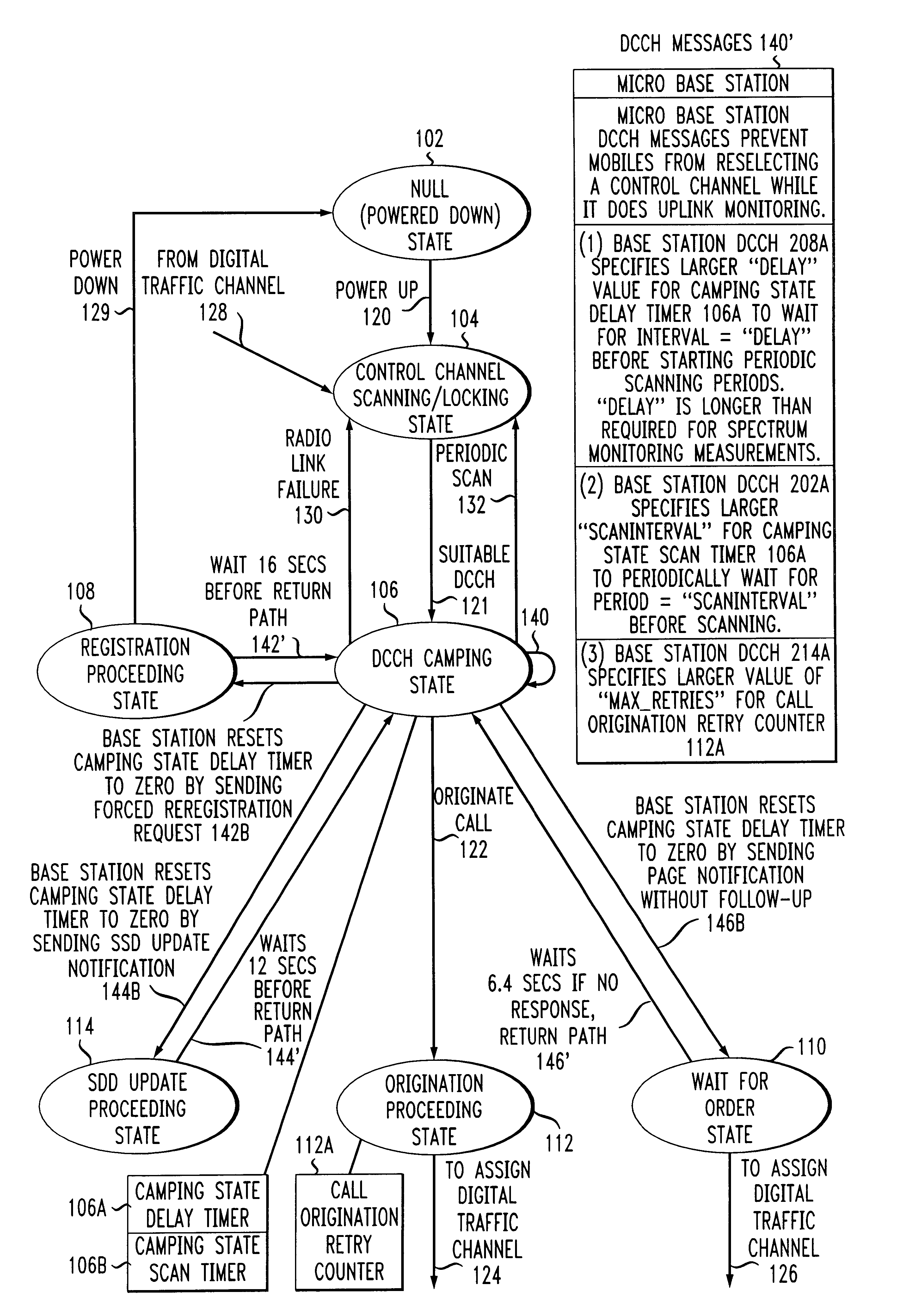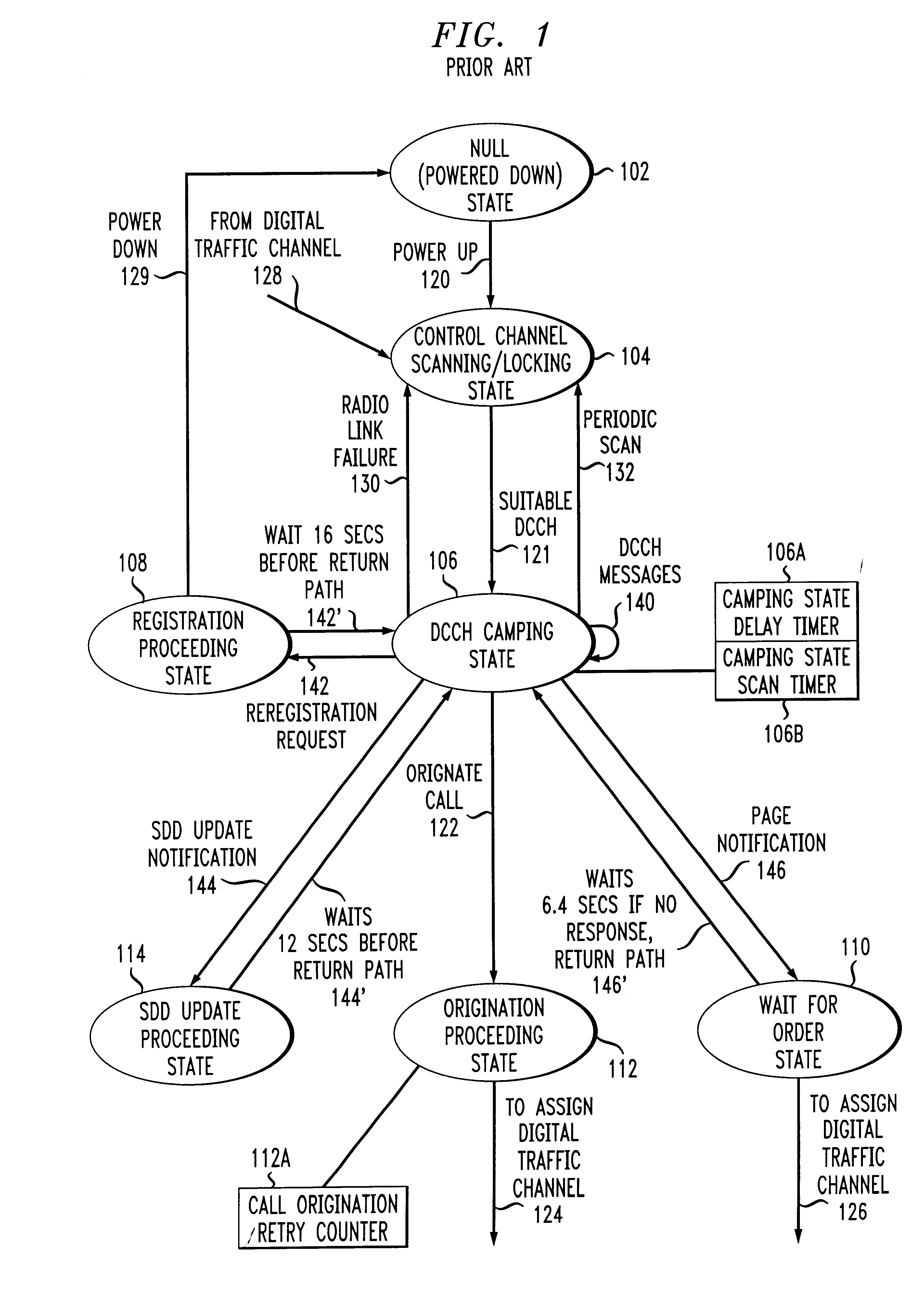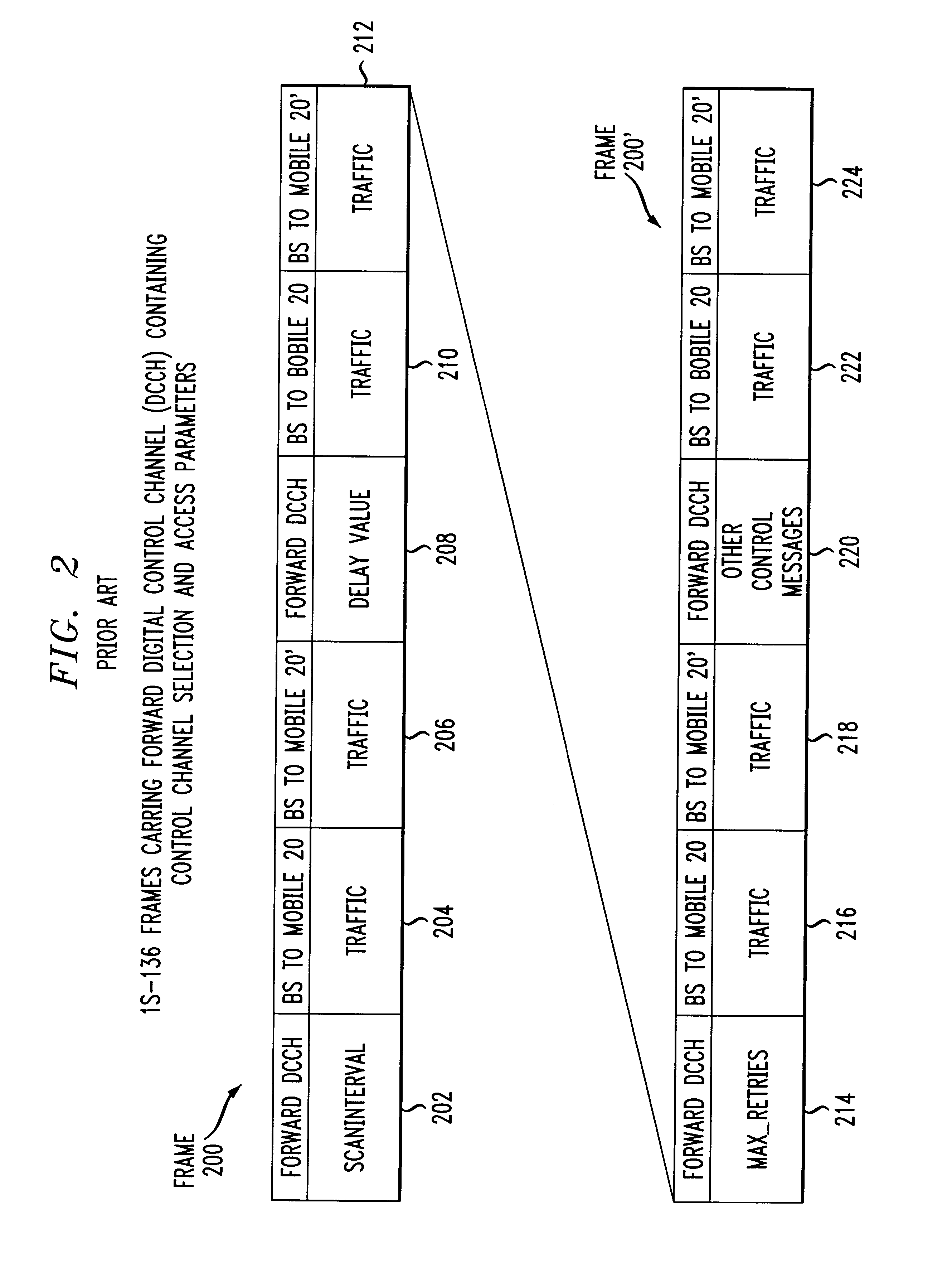Method for uplink spectrum monitoring for sparse overlay TDMA systems
a sparse overlay and spectrum monitoring technology, applied in the field of wireless communication, can solve the problem of at least confronting the prior ar
- Summary
- Abstract
- Description
- Claims
- Application Information
AI Technical Summary
Benefits of technology
Problems solved by technology
Method used
Image
Examples
Embodiment Construction
The operation of a wireless mobile device 20 which is registered to a microcell base station 10 is controlled by the base station as shown in the state diagram of FIG. 4, in accordance with the invention. The various states depicted in FIG. 4 are the same as those described for FIG. 1, but the particular control inputs to the states and the application of the responses by the states are modified, in accordance with the invention. The microcell base station 10, transmits digital control channel (DCCH) inputs 140' to the mobile 20 which prevent the mobile 20 from reselecting a control channel while microcell base station 10 does uplink monitoring.
FIG. 5A is a diagram of IS-136 frames carrying forward digital control channel (DCCH) containing messages to set timer and counter values to large values in the mobile device, in accordance with the invention. The frame 200A shown in FIG. 5A contains control channel selection parameters for a larger SCANINTERVAL value in time slot 202A and a ...
PUM
 Login to View More
Login to View More Abstract
Description
Claims
Application Information
 Login to View More
Login to View More - R&D
- Intellectual Property
- Life Sciences
- Materials
- Tech Scout
- Unparalleled Data Quality
- Higher Quality Content
- 60% Fewer Hallucinations
Browse by: Latest US Patents, China's latest patents, Technical Efficacy Thesaurus, Application Domain, Technology Topic, Popular Technical Reports.
© 2025 PatSnap. All rights reserved.Legal|Privacy policy|Modern Slavery Act Transparency Statement|Sitemap|About US| Contact US: help@patsnap.com



